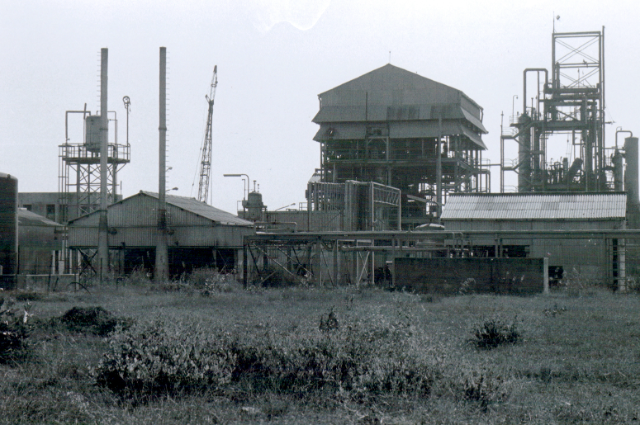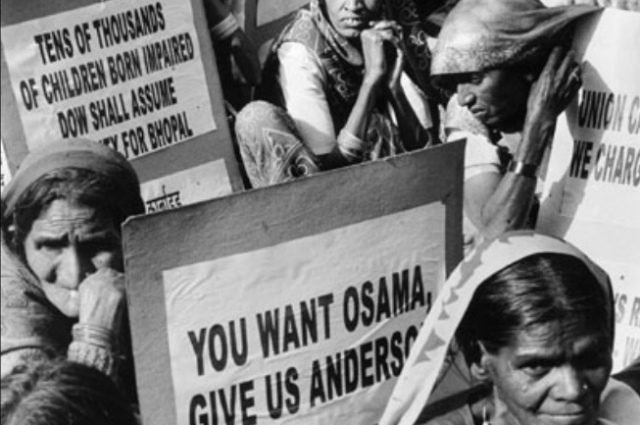One morning, the sun rose on the narrow roads of Bhopal, Madhya Pradesh. To illuminate the eyes with hope and the possibility of a better tomorrow, just to shut them off hours later with a burning smell of cabbage. Tens of thousands of people were killed, some half a million others suffered maladies, and the site remained contaminated decades after the leak. Yet the lives worth a mere US$ 460, for no ground of fraud was pleaded?
A leak in the tank valve and irritation in the eyes being considered a “usual phenomenon” was concerning in the very first half. Was that the respect and the value offered to the staff?
Lack of expertise and knowledge was yet another disaster. Was the company not responsible for appointing or at least tutoring the labour, the mandatory protocol, Which if ignored, would cost innocent lives like it did? Where were the government and the surveys, when humanity was being exploited for the sake of profit and loss? Let us not forget the actions executed to prevent any aid from reaching the area in crisis. So those lives mattered less, or were fine being sacrificed?
If the concern was about the population, not the economy then why a lethal chemical was allowed to be brought up in the centre of the city? Modernization could not be more precious than the generation itself, or was it?
An American limited branch in an industrial town in India but the protective equipment, which should have prevented or at least minimised the discharge, was completely out of action. The refrigeration system, which should have cooled the storage tank, was shut down. The scrubbing system, which should have absorbed the vapour, was not immediately available. And the flare system, which should have burnt any vapour which got past the scrubbing system, was out of use.
Just because farmers refused to kill their crops in the name of pesticides, ultimately hindering profit. Were their lives not worth existing? What was the fault of the families and the children that their whole world got trampled over which they even failed to view due to ache and burn in the orbs? What fault did they do that the air they breathe choked them to demise.
Many people died in their sleep because of the heavy gas cloud, which affected the greater part of the city in no time. Others woke up to an intense irritation in their eyes, choking, and suffocating sensation in their throats and lungs. They rushed out onto the streets, gasping for fresh air, only to make matters worse for themselves.
Over 8000 people died in the immediate aftermath. About 250,000 were left with permanent disabilities. In the year 1998, i.e., 14 years later, the death toll had risen to over 16,000. In this context, numbers have little meaning as the actual figures are much more than the official figures. All the members of many families were completely wiped out. No one was left to claim anyone else. Since then 10 to 15 persons die every month from exposure-related diseases and their complications. Over 120,000 children, men, and women continue to suffer acutely from a host of exposure-related illnesses and complications.
But a half-truth is more dangerous than a lie. So, let's learn it from the scratch.
What is Union Carbide?
Union Carbide Corporation is an American chemical company, an owned subsidiary (since February 6, 2001) of Dow Chemical Company. It produces chemicals and polymers that undergo one or more further conversions by customers before reaching consumers.
The company was formed in 1917 as Union Carbide and Carbon Corporation, acquiring four earlier companies: Linde Air Products Company (established 1907), National Carbon Company (1899), Prest-O-Lite Company, Inc. (1913), and Union Carbide Company (1898). It assumed the name Union Carbide Corporation in 1957.
Formed during wartime, the company immediately took on the manufacture of new diversified products, providing helium, ferrozirconium, and activated carbon for the U.S. military, thus setting the pattern for the company’s future development. After World War I, it retained its chemicals business and moved into the consumer field, becoming one of the first companies to use market research to discover potential consumer needs and create products to fill them. Early products of this type were the first antifreeze, Prestone (introduced in 1927), and the first batteries for portable radios, under the Eveready brand (introduced in 1959).
World War II further expanded the company’s research and development activities. Union Carbide was a major contributor to the development of the first atomic bomb. Union Carbide had already become a pioneer in the manufacture of petrochemicals. It also produced plastics, industrial gases, metals, and carbon products, and electronics and medical products. In 1986–87, however, it sold many of its home and automobile products businesses (such as those for batteries, waxes, and antifreeze).
On Dec. 3, 1984, Union Carbide’s pesticide plant in Bhopal, India, was the scene of one of the worst industrial accidents in history also the biggest tragedy of India when methyl isocyanate gas leaked from the plant and spread over a populated area, killing at least 2,000 people at the time of the accident and causing an estimated 15,000 to 20,000 subsequent deaths. Many thousands more sustained lifelong injuries. Suits for damages were brought against the company, and in 1989 India’s Supreme Court ordered Union Carbide to pay $470 million in compensation to the victims of the accident. After its merger with Dow, Union Carbide remained a leading producer of chemicals and polymers for use in a variety of industrial and consumer products, including paints, solvents, antifreeze, and coatings.
Where did we lack?
- Adequate in-built safety systems were not provided and those provided were not checked and maintained that 'MIC is an acute irritant, but certainly not lethal'.
- The Director of Health, Safety, and Environment of Union Carbide at their headquarters in Danbury, Connecticut, USA, openly denied the hazardous, poisonous, and noxious effects of MIC and dismissed the chemical as 'a potent tear gas; nothing more than that'.
- It was reported that the Managing Director of Union Carbide India Ltd., had said, 'It was an unusual incident, rather abnormal, which cannot be explained. Normally, when the gas pressure builds up it immediately gets diverted to the scrubbing system through the vent. The gas release was stopped as soon as the abnormal pressure level was detected, and the plant was shut down.'
- The local medical professionals had to rush to the library to get the correct technical information and possible antidotes.
- The information collected and investigations and inquiries made helped to conclude that there was no system safety engineering and management established and practiced in Union Carbide, least of all in the plant at Bhopal, in spite of having a Directorate of Health, Safety, and Environmental Affairs.
- The Union Carbide management at their headquarters level as well as at their Indian subsidiary level mismanaged before, during, and after the entire disaster to such an extent that there is no parallel in world history.
As a matter of fact, the company still stands on Indian ground. When Dow, however, has steadfastly refused to clean up the Bhopal site. Nor has it provided safe drinking water, compensated the victims, or shared with the Indian medical community any information it holds on the toxic effects of MIC.
And in their defense, sales never met the company’s expectations. Indian farmers, struggling to cope with droughts and floods, lacked the money to buy Union Carbide’s products.
Despite having indisputable proof of the site’s toxicity, Union Carbide chose not to notify local people that the water was unsafe. It attacked those in the community who voiced concern, dismissing them as “troublemakers”.
Aftermath
Thousands of tons of pesticides, solvents, chemical catalysts, and byproducts were laid strewn across six hectares inside the plant. Evaporation ponds which covered 14 hectares outside the factory were littered with thousands of litres of liquid waste.
The plant, which never attained its full production capacity, proved to be a loss-making venture and was shut down in the early 1980s, though large quantities of dangerous chemicals were left abandoned on the site.
Three huge steel tanks continued to hold more than 60 tons of MIC. Although MIC is a particularly unstable gas, Union Carbide’s elaborate safety systems were allowed to fall into disrepair and become ineffective. The factory managers’ reasoning seemed to be that, since production had stopped, no threat remained.
Ironically when monsoons battered the decaying plant, rain caused the chemical-waste evaporation ponds to overflow. Toxins penetrated the soil, leaching into underground channels. Contaminated water from wells was pumped into 42 neighbourhoods.
A fish was caused to death, humans weren't an exception.
Union Carbide was charged with "culpable homicide not amounting to murder”. The corporation, like its former chief executive, refused to face trial in India, and the charges have never been resolved. Carbide, Dow has been served summons to appear in court at least six times in Bhopal to explain Union Carbide’s continued absence. It has ignored all six notices.
On the contrary, Carbide, Dow settled a US lawsuit, paying out $2.2bn to compensate people in the US affected by Union Carbide’s use of asbestos in legacy products. But Dow maintains that it is not liable for Union Carbide’s actions in Bhopal.
Now is it the audacity of the company of belittling the nation while prioritising the other?
It is it the authenticity of the international reputation portrayed on how WE react to safeguard our justice and rights.
The Worst part
The most terrifying part of the nutshell is that even after 35 years, the disaster still prevails affecting lives. Children are born with inabilities, lung problems, and thyroid. Mother's milk has been detected with lethal helium.
The land where the harmful waste was discarded is still open for children and animals to roam around. People still aren't capable of surviving due to injuries. No charge has been ever taken for cleaning the air or land.
It isn't life, it isn't death. It's a terrible in-between people are stuck at.
Neither the government nor the company initiated to take the accountability and authority of the situation. The count of victims is long lost by now. All one could ask is whether it is the audacity or the authenticity.


